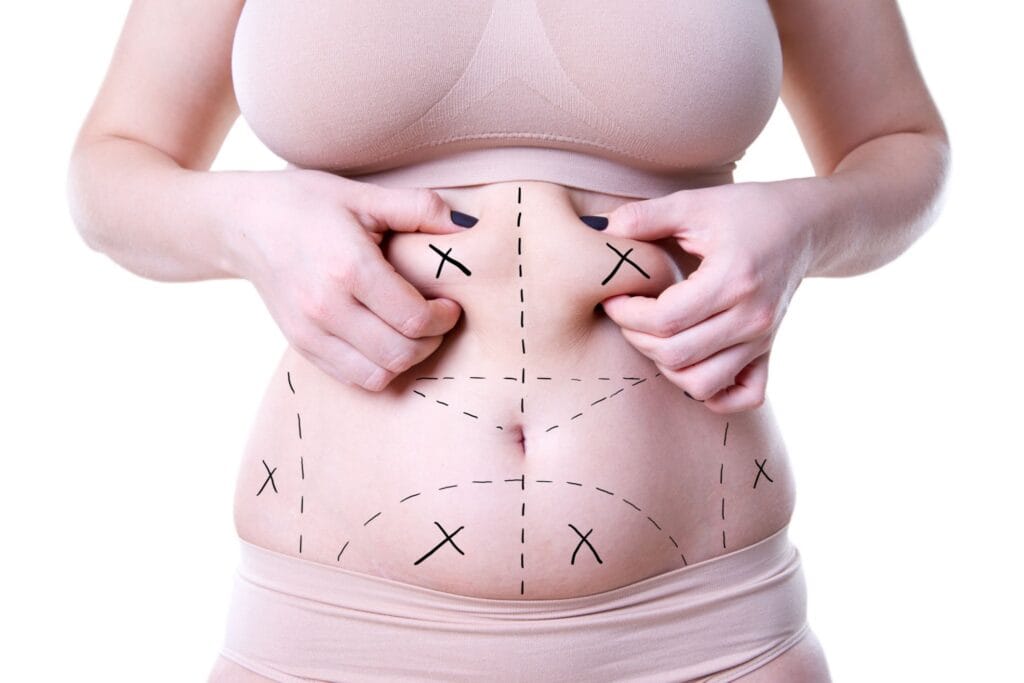Liposuction, while a powerful body contouring procedure, isn’t a weight-loss solution. It’s crucial to understand that its effectiveness hinges on a patient’s overall health and realistic expectations. This article clarifies the relationship between weight, BMI, and candidacy for liposuction.
Table of Contents
Understanding BMI and Liposuction
Body Mass Index (BMI) provides a general assessment of body fat based on height and weight. While a healthy BMI is often cited as 18.5 to 24.9, liposuction isn’t solely determined by this number. The procedure targets localized fat deposits resistant to diet and exercise, not overall weight reduction. A patient with a BMI within the healthy range can still benefit from liposuction to refine specific areas. It’s important to remember BMI is a broad indicator, and doesn’t account for muscle mass or body fat distribution.
Liposuction is not a substitute for healthy lifestyle choices. Patients should maintain a stable weight before and after the procedure to optimize results and minimize complications. Significant weight fluctuations post-procedure can negatively impact the final outcome. Therefore, pre-operative consultations thoroughly assess lifestyle habits and establish realistic goals. This collaborative approach ensures the best possible results and patient satisfaction.
The procedure itself doesn’t drastically alter BMI. The amount of fat removed is carefully calculated to maintain body proportions and avoid an unnatural appearance. The primary goal is to sculpt and refine the body, not to achieve significant weight loss. Patients expecting dramatic weight change through liposuction should consider alternative weight management strategies. This is critical to setting realistic expectations and avoiding disappointment.
Finally, it’s essential to understand that liposuction is not a quick fix for obesity. Severe obesity may require alternative weight loss methods before considering liposuction. The procedure is most effective for individuals with localized fat deposits that are resistant to diet and exercise, and who are already relatively close to their ideal weight.

Ideal Candidate Weight Ranges
There isn’t a single “ideal” weight for liposuction. Instead, candidacy is determined by a holistic assessment of the patient’s health, body composition, and realistic expectations. While significantly overweight individuals may not be ideal candidates, those with a BMI within the healthy range or slightly above can still benefit from the procedure. The focus is on localized fat deposits, not overall weight.
Successful candidates typically have good skin elasticity and tone. This ensures that the skin retracts smoothly after fat removal, preventing sagging or unevenness. Pre-operative consultations assess skin quality to determine suitability. Individuals with excessive loose skin may require additional procedures to achieve optimal results.
The amount of fat removed is carefully planned based on individual anatomy and desired outcome. Excessive fat removal can lead to complications, so a conservative approach is always preferred. The surgeon will discuss realistic expectations and limitations based on the patient’s individual characteristics. This ensures that the procedure aligns with the patient’s goals and body type.
Ultimately, the ideal weight range for liposuction is determined on a case-by-case basis during a thorough consultation. Factors such as body composition, skin elasticity, and overall health are carefully considered before proceeding. A comprehensive evaluation ensures that the patient is a suitable candidate and that the procedure aligns with their individual needs and goals.
Factors Beyond the Numbers
Beyond BMI and weight, several other factors influence liposuction candidacy. Skin elasticity plays a crucial role in achieving optimal results. Patients with poor skin elasticity may experience sagging or unevenness after fat removal. This is assessed during the consultation through physical examination and discussion of the patient’s medical history.
Overall health is paramount. Patients with certain medical conditions, such as diabetes or heart disease, may require additional assessment before undergoing the procedure. A thorough medical history review is essential to identify any potential risks or contraindications. This ensures the safety and well-being of the patient.
Lifestyle factors, including smoking and alcohol consumption, also influence the outcome. Smoking can impair healing and increase the risk of complications. Excessive alcohol consumption can also interfere with the healing process. Patients are advised to modify their lifestyle habits before and after the procedure to optimize results.
Finally, realistic expectations are key to a successful outcome. Patients should understand that liposuction is a body contouring procedure, not a weight-loss solution. The goal is to refine and sculpt specific areas, not to achieve significant weight reduction. Open communication between the patient and surgeon is crucial to setting realistic goals and managing expectations.

Realistic Expectations & Results
Liposuction results are not immediate. Swelling and bruising are common in the initial weeks following the procedure. Patients should expect gradual improvement over several months as the swelling subsides and the body heals. The final results are typically visible after several months.
The procedure is designed to remove excess fat from specific areas, resulting in a more sculpted and defined appearance. It’s important to understand that it won’t eliminate cellulite or significantly alter overall weight. Patients should have realistic expectations about the achievable outcomes based on their individual anatomy and body composition.
Maintaining a healthy lifestyle after the procedure is crucial for long-term results. A balanced diet and regular exercise help to maintain the achieved body contour and prevent future fat accumulation. Post-operative care instructions should be followed carefully to minimize complications and optimize healing.
Ultimately, successful liposuction results depend on a combination of factors, including the patient’s health, realistic expectations, and adherence to post-operative care instructions. Open communication with the surgeon is essential throughout the process to ensure a positive and satisfying outcome.
Liposuction is a powerful tool for body contouring, but its success depends on a comprehensive assessment of the patient’s overall health, realistic expectations, and a thorough understanding of the procedure’s limitations. A collaborative approach between patient and surgeon is crucial for achieving optimal and safe results.
Transform Your Confidence with Surgyteam!
Join the thousands of satisfied patients who have experienced the exceptional care and expertise of Surgyteam’s renowned plastic surgeons. Whether you’re seeking aesthetic enhancements or reconstructive surgery, our dedicated team in Antalya is here to provide you with the highest quality treatment and personalized care.


